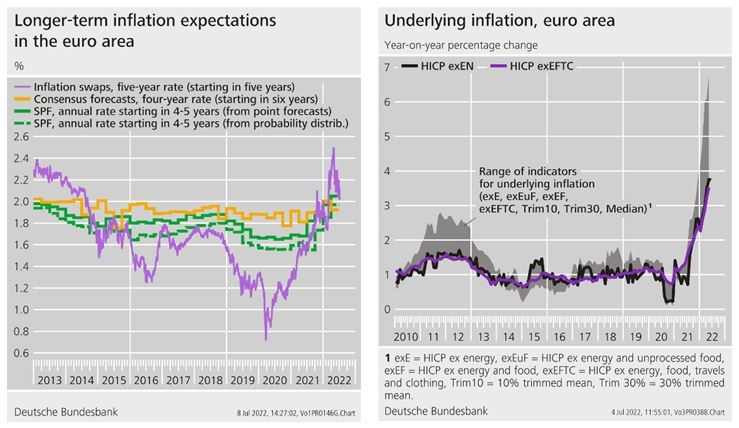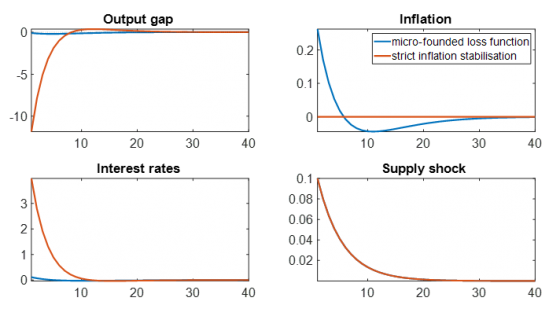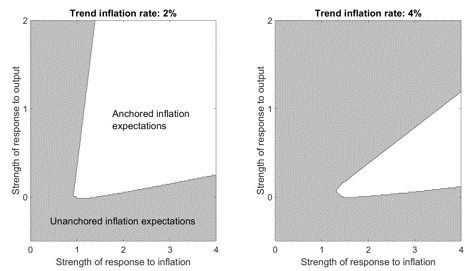References
Ascari, G., A. Florio and A. Gobbi (2017): Transparency, expectations anchoring and inflation target, European Economic Review, Vol. 91, pp. 261-273.
Bank for International Settlements (2022), Annual economic report.
Clarida R., J. Galí and M. Gertler (2000), Monetary Policy Rules and Macroeconomic Stability: Evidence and Some Theory, Quarterly Journal of Economics, Vol. 115, pp.147-180.
Cogley, T., and A. M. Sbordone, (2008). Trend inflation, indexation, and inflation persistence in the New Keynesian Phillips curve. American Economic Review, 98(5), pp. 2101-26.
Coibion O. and Y. Gorodnichenko (2011), Monetary Policy, Trend Inflation, and the Great Moderation: An Alternative Interpretation, American Economic Review, Vol. 101, pp. 341-370.
Deutsche Bundesbank (2018), Lower bound, inflation target and the anchoring of inflation expectations, Monthly Report, June 2018.
Erceg, C. J., D. W. Henderson and A. T. Levin (2000). Optimal monetary policy with staggered wage and price contracts, Journal of Monetary Economics 46(2): pp. 281-313.
Evans, G. W. and S Honkapohja (2001), Learning and expectations in macroeconomics, Princeton University Press.
Eusepi, S. and B. Preston (2018), The science of monetary policy: an imperfect knowledge perspective, Journal of Economic Literature, 56 (1), pp 3-59.
Ireland, P. N. (2007), Changes in the Federal Reserve’s inflation target: causes and consequences, Journal of Money, Credit and Banking, Vol. 39(8), pp. 1851-1882.
Lubik T. and C. Matthes (2016), Indeterminacy and learning: An analysis of monetary policy in the Great Inflation, Journal of Monetary Economics, Vol. 82, pp. 85-106.
Orphanides, A. (2004), Monetary Policy Rules, Macroeconomic Stability, and Inflation: A View from the Trenches, Vol. 36(2), pp. 151-175.
Reis, R. (2021), Losing the Inflation Anchor, CEPR Discussion Papers 16664, October 2021.
Romer, C. D. and D. Romer (2002), The evolution of economic understanding and postwar stabilization policy, Proceedings – Economic Policy Symposium – Jackson Hole, pp. 11-78.




